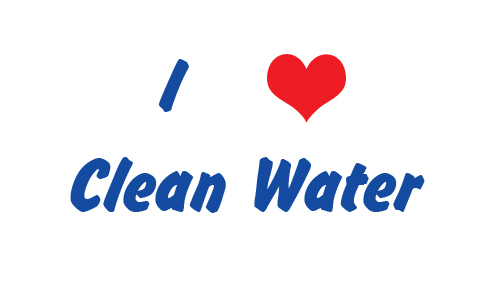Clean Water Act
Click here to download a PDF of this position statement
 Changes in US EPA Policy Implementing the Clean Water Act Are Required to Restore Water Quality in the Nation’s Lakes and Reservoirs
Changes in US EPA Policy Implementing the Clean Water Act Are Required to Restore Water Quality in the Nation’s Lakes and Reservoirs
The Clean Water Act and US EPA Policy
The point source-based National Pollution Discharge Elimination System has been successful. Pointsource pollutant inputs have long contributed only 5-10% of total nutrient inputs to freshwater nationally (Giannessi and Peskin 1984). However, the nonpoint-source watershed-management program has been much less successful. The major nutrient inputs to most lakes and reservoirs are from nonpoint-sources, and they are increasing. Furthermore, neither program addresses nutrient inputs from groundwater or atmospheric deposition. In addition, decades of nutrient inputs to lakes and reservoirs from both sources have led to nutrient accumulations in sediment. These sediments now serve as internal nutrient sources, contributing to eutrophication and excessive algal and cyanobacterial growth. Toxigenic cyanobacteria often dominate the beneficial algae in eutrophic waters, forming harmful algae blooms (HABs). The prevalence of HABs in lakes and reservoirs increased from 10-20% in 1972 to 50-58% in 2007 (Gakstatter and Maloney 1975; EPA 2009). HABs cause water quality impairments that endanger human and animal health, aquatic ecosystem biodiversity and sustainability, drinking source waters, and economies (Cooke et al. 2005).
Since the early 1990s, US EPA policy has focused on watershed management as the solution to reversing water quality impairment in lakes and reservoirs. The Clean Water Act’s waterbody (in-lake) management techniques to improve water quality directly have been deliberately excluded from funding and support. Watershed-based nonpoint-source “best management practices” (BMPs) can improve the water quality in streams. They have yet to be shown to improve water quality in lakes or reservoirs in a cost-effective and timely manner. No large eutrophic waterbody with nutrient inputs dominated by nonpoint sources has been delisted through the use of watershed-based techniques (Hudnell 2014). Time lags in BMP effectiveness, very slow declines in sediment phosphorus levels, and continually increasing internal-nutrient loads indicate that impaired lakes and reservoirs will not achieve water-quality standards for decades to centuries (Carpenter 2005; Meals et al. 2010).
Current US EPA policy implements the CWA by supporting point-source and watershed-based nonpoint-source management, while not supporting – in policy or financially – waterbody management. This policy deliberately ignores a suite of approaches that can directly improve water quality quickly and cost-effectively.
Waterbody Management: Within Lake and Reservoir Treatments
A number of waterbody management techniques are available that can help achieve water quality standards at potentially lower life-cycle cost than watershed management alone. Waterbody management techniques currently in use include, but are not limited to, water circulation, aeration, oxygenation, flocculation, and nutrient-removing constructed and floating wetlands, and side-stream flow-ways. On- going research into ultrasound, nitrifying and denitrifying bacteria, and other techniques may provide additional alternatives for waterbody management. These techniques can suppress cyanobacteria, increase dissolved oxygen, enhance beneficial algae and bacteria, improve fisheries by channeling nutrients up trophic levels, directly remove nutrients, degrade toxic substances, deactivate pathogens, and prevent the methylation of mercury.
However, these techniques are currently underused because US EPA policy does not support them, even as freshwater quality across the nation continues to decline. The US EPA must embrace a whole system approach to the implementation of the CWA and incorporate waterbody management as a fullysupported complement to point-source controls and watershed BMPs.
The Issues
- Water quality in many US lakes and reservoirs is impaired. The number of impairments is increasing, in spite of large expenditures of money and time.
- The degradation of lake and reservoir water quality imperils health, aquatic ecosystems, water supplies, and the economies dependent on them.
- Current US EPA freshwater management policy implementing the CWA is inadequate to restore water quality in lakes and reservoirs cost-effectively and over reasonable periods of time.
NALMS Positions
- NALMS supports changes in US EPA policy implementing the CWA to fully support waterbody management on an equal basis with the currently emphasized point-source and watershed controls.
- NALMS supports a whole-system approach to water quality protection and restoration that views waterbodies and watersheds as systems and does not a priori privilege intervention in one part of the system over another.
- NALMS supports the development and use of systematic scientific and economic analyses that identify a particular suite of management actions to improve water quality in a given waterbody in the least amount of time and at the lowest possible cost.
- NALMS supports the funding of rigorous scientific analyses of potential management techniques to determine their efficacy in reducing direct and secondary causes of water quality impairment.
References
Carpenter, S. 2005. Eutrophication of aquatic ecosystems: bistability and soil phosphorus. Proceedings of the National Academy of Science 102(29): 10002-10005.Cooke, G.D., E.B. Welch, S.A. Petterson, and S.A. Nichols. 2005. Restoration and Management of Lakes and Reservoirs, 3rd Edition. Taylor and Francis. Boca Raton.
EPA. 2009. National Lakes Assessment, A Collaborative Survey of the Nation’s Lakes. Washington, DC, pp. 104.
Gakstatter, J.H. and Maloney, T.E. 1975. Potential impact of a detergent phosphorus ban on eutrophication in selected American lakes and streams. U.S. Environmental Protection Agency, Corvallis, OR, pp. 19.
Gianessi, L.P. and Peskin, H.M. 1984. An overview of the RFF Environmental Data Inventory—Methods and preliminary results: Resources for the Future, Washington, D.C., pp. 111.
Hudnell, H.K. 2014. Personnel communications with U.S. Environmental Protection Agency, Office of Water and all 10 regional offices.
Meals, D.W., S.A. Dressing, and T.E. Davenport. 2010. Lag time in water quality response to best management practices: a review. Journal of Environmental Quality 39:85-96.
Adopted by the NALMS Board of Directors on [November 10, 2014]
